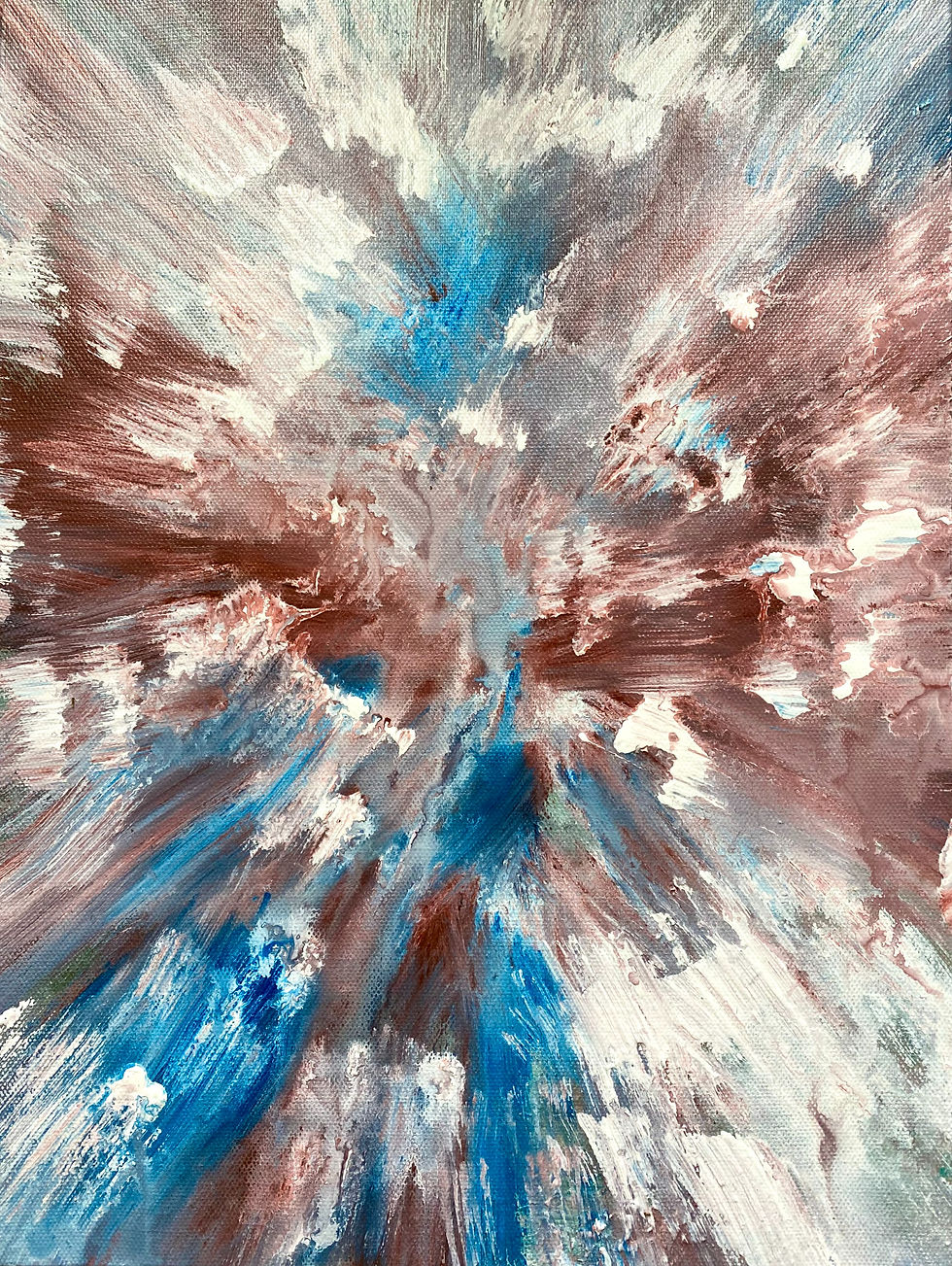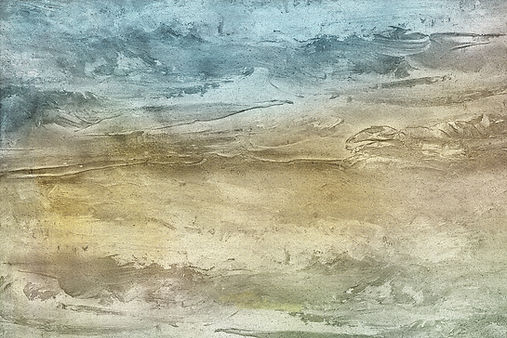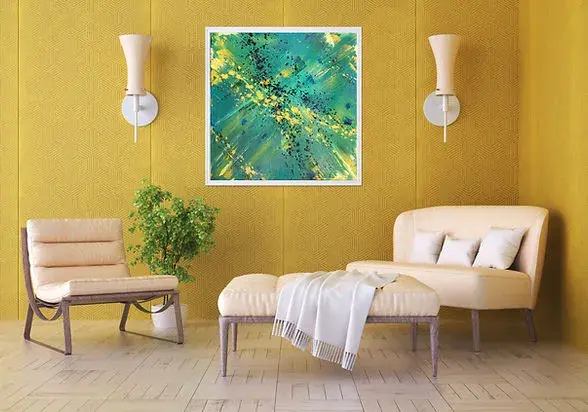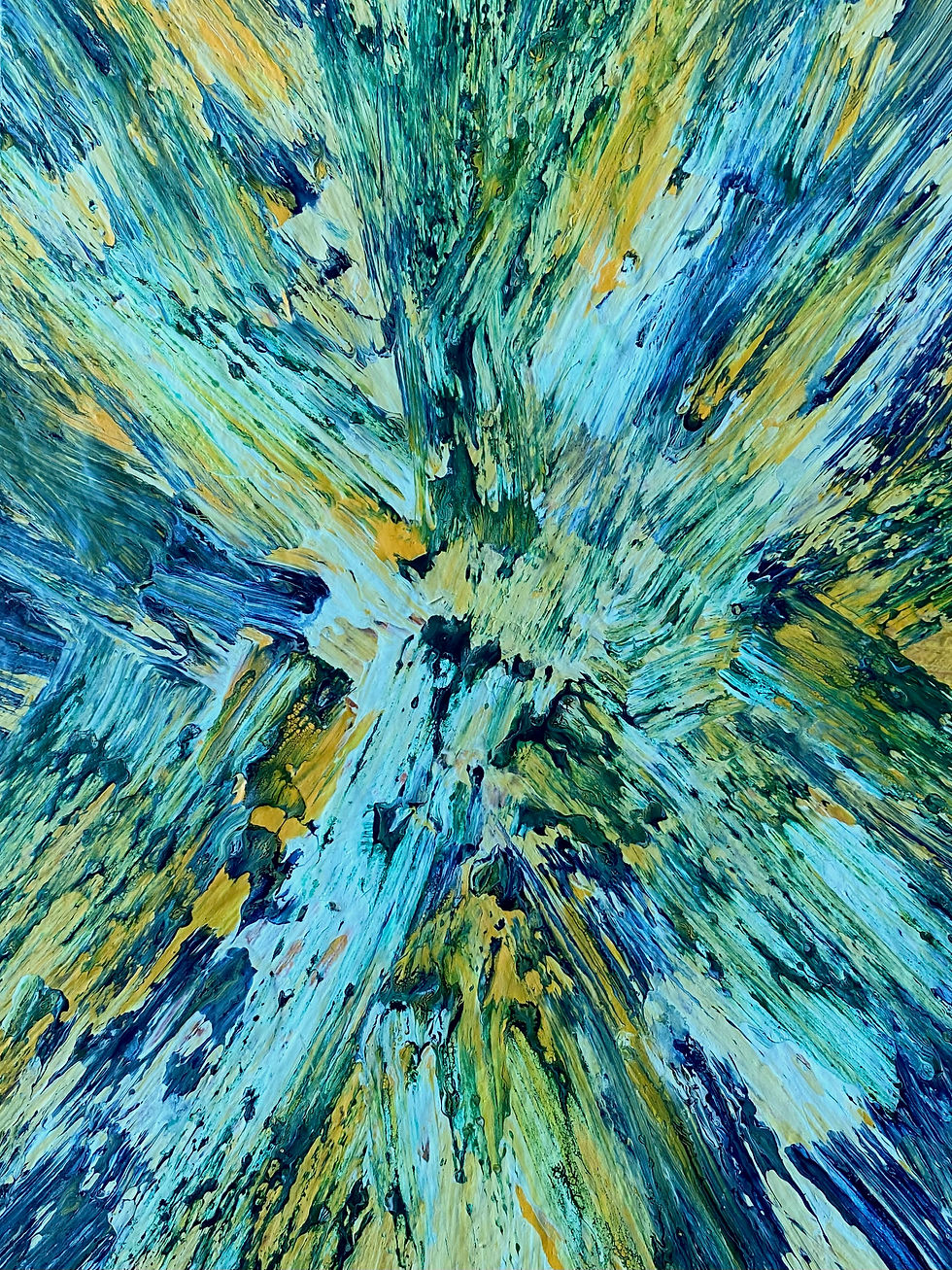- Ilwad Abdi

- Jun 16
- 2 min read

In today’s fast-paced world, we’re constantly looking for ways to reduce stress and reconnect with ourselves. Mindfulness has emerged as a powerful tool—helping with everything from anxiety and insomnia to emotional regulation and mental clarity. But there’s a quiet, often overlooked companion to mindfulness: abstract art.
When chosen with intention, abstract art becomes more than just décor—it becomes part of the healing process.
The Power of Mindfulness in Design
Mindfulness is the practice of being fully present—aware of our thoughts, surroundings, and sensations without judgment. From breathing deeply to noticing emotional patterns, mindfulness helps restore balance in our everyday lives. But beyond the practice itself, the space in which mindfulness is practiced matters. Minimal distractions, warm lighting, and meaningful visuals contribute to a calming environment. And this is where art—especially abstract art—steps in.

Emotional Atmosphere Through Art
In healing environments like therapy rooms, wellness studios, clinics, or even home sanctuaries, the presence of abstract artwork can shift the entire mood. Soft brushstrokes can calm the nervous system. Fluid shapes can draw attention back to the body and breath. Rich textures may offer a focal point for meditation. These elements make abstract art for healing not just beautiful—but deeply functional.
Art as Therapy, Mindfulness as Companion
Healing isn’t always linear. Whether physical, emotional, or spiritual, recovery takes time—and environment plays a key role. A sterile white wall might do little to ease a patient’s mind. But one thoughtful painting—a gentle burst of color, a swirl of gold—can foster comfort, warmth, and grounding. For many, it becomes a point of focus during meditation or therapy—a soft anchor in times of emotional overwhelm.
Abstract art and mindfulness are deeply interconnected. Both invite us into the present moment. Both resist judgment. Both create space for complexity, reflection, and rest. So let us not ignore the quiet power of art. Let us hang it in our healing rooms, meditation corners, and bedrooms—not just as decoration, but as emotional support.
At Imgabose Abstract Gallery, we believe healing starts with intention. Our curated collection of abstract art is designed to inspire stillness, spark emotion, and elevate any space.
→ Explore now and buy abstract art online that brings your space to life.






